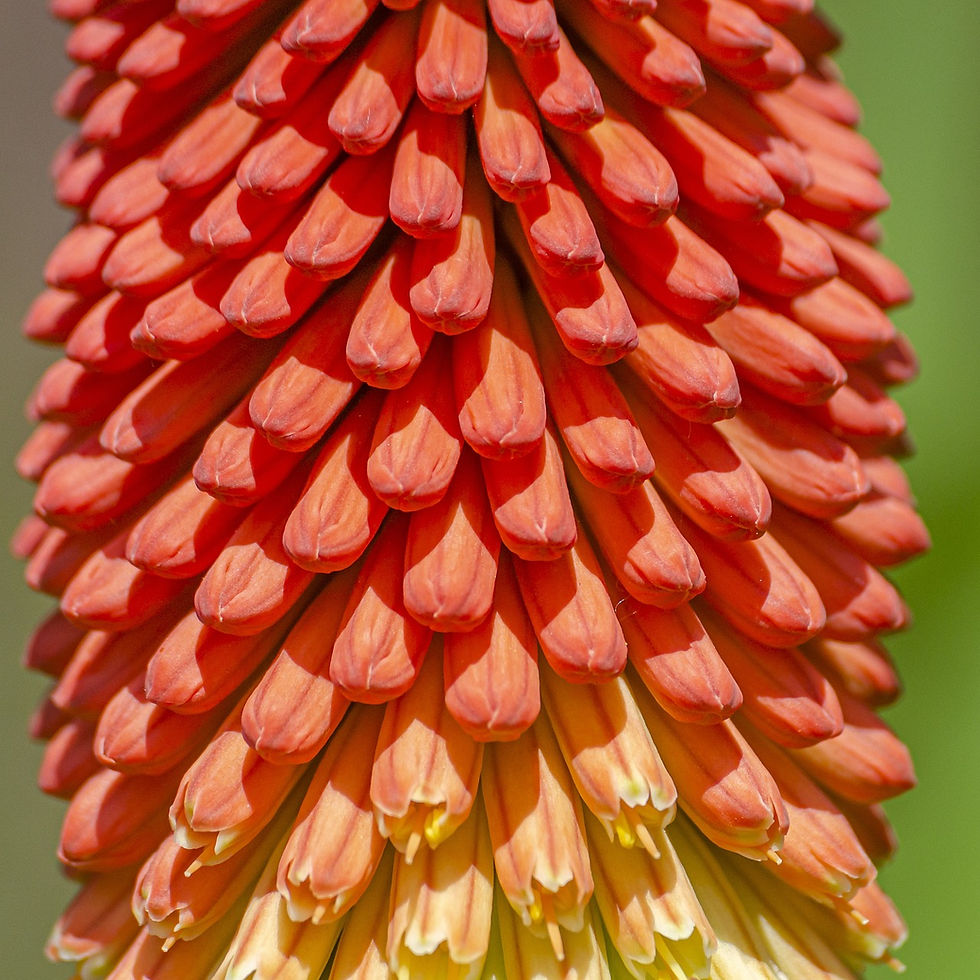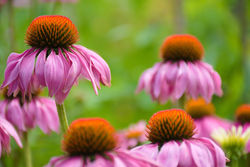Kniphofia: How to plant and care for Red Hot Pokers
- Lars Wildes

- Aug 1, 2023
- 4 min read
Imagine a garden adorned with torch-like flower spikes that blaze with a captivating mix of orange, yellow, and crimson. (Sounds incredible, right?)
That’s exactly how Kniphofia, also known as Red Hot Pokers or Torch Lilies, look in the garden.
This gorgeous perennial puts on a fantastic show. From the moment its rich burgundy buds unfurl, transitioning into a burst of fiery brilliance, this perennial commands attention, inspiring awe and admiration. And the bees love it.
We’ve just added Pyromania Backdraft to our perennial garden border and now want to let you in on the secrets to growing this fiery plant in your garden.
From its origins to its unique characteristics, cultivation tips, and general Kniphofia care, keep reading to discover everything you need to create a vibrant display in your outdoor space.
Introducing Kniphofia and its varieties
The Kniphofia genus, a member of the Asphodelaceae family, boasts approximately 70 species that originate from Africa.
These herbaceous perennials have earned their popular moniker due to their striking flower spikes, reminiscent of glowing red pokers or blazing torches. In Danish, we call them Rocket Flowers (Raketblomst) because they look like rockets blasting off into outer space.
Among the fascinating species, the Pyromania Backdraft stands out with its mesmerizing colors and exceptional traits.
Kniphofia Pyromania Backdraft: A fiery spectacle for your garden
Distinctive coloration
Pyromania Backdraft is celebrated for its bicolor flowers that begin with rich, dark burgundy or nearly black buds, transitioning into a blaze of orange and yellow as they unfurl.
This unique color play ensures an unforgettable display that commands attention.
Long-lasting blooms
Once Pyromania Backdraft begins to bloom, you’ll get to enjoy its bold colors for several weeks.
This variety has a longer bloom time than most other Kniphofia types.
Tall and elegant
Reaching a height of 3 to 4 feet (90 to 120 cm), Kniphofia Pyromania Backdraft adds an element of vertical interest to your garden.
Its elegant form makes it an excellent focal point or a stunning backdrop for other ornamental plants. We suggest planting in the middle of your border or flower bed.
Drought tolerance
Kniphofia, including Pyromania Backdraft, are well-adapted to dry conditions, making them ideal for water-wise gardens or regions with limited rainfall. Once established, they can thrive with minimal water requirements.

Cultivation and care tips for Kniphofia
Sunlight and where to plant them
Kniphofia (including Pyromania Backdraft) flourish in full sun to light shade.
In regions with hot summers, consider providing some afternoon shade to shield the plant from excessive heat.
Choose a location with well-draining soil and good air circulation.
Soil requirements
The key to cultivating successful Kniphofia lies in well-draining soil.
Sandy or loamy soils enriched with organic matter promote healthy growth while preventing waterlogging. Ensure a pH level between 6.0 and 7.5 for optimal development.
Watering
While Kniphofia is drought-tolerant, consistent watering during dry spells or while establishing new plants is crucial for robust growth and continuous flowering.
Avoid overwatering to prevent root rot and other water-related issues.
Pruning and deadheading
Trim spent flower spikes promptly to encourage new blooms and maintain the plant's tidy appearance.
In late winter or early spring, remove any damaged or dead foliage to promote healthy regrowth.
Fertilization
Kniphofia typically thrives without heavy fertilization. Apply a balanced, slow-release fertilizer in early spring to support healthy growth and flowering.
Winter protection
In colder climates, apply a thick layer of mulch around the base of the plant in late fall to protect the roots from freezing temperatures. Mulching also helps retain moisture during winter dormancy.

Landscaping ideas with Kniphofia
Mixed borders
Complement Pyromania Backdraft's fiery beauty by planting it alongside other drought-tolerant perennials like ornamental grasses, Echinacea, and Agastache. The contrasting colors and textures create a vibrant and low-maintenance mixed border.
Rock gardens
Set Kniphofia amid rocks or boulders to create a captivating display. The striking colors will beautifully contrast with the rugged textures of the rocks, adding interest to your rock garden.
Container gardening
Utilize Kniphofia Pyromania Backdraft's tall and elegant stature as a centerpiece in large containers. Combine it with complementary annuals or perennials for a captivating potted display that can be moved and rearranged as needed.
Pollinator gardens
Kniphofia flowers, including Pyromania Backdraft, attract hummingbirds, butterflies, and bees. Creating a pollinator garden with this fiery beauty will not only provide visual delight but also contribute to the well-being of local wildlife.
Armed with the right cultivation and care tips, you can easily nurture this stunning perennial and enjoy its long-lasting blooms throughout the growing season.
Whether used as a focal point or blended with other perennials in mixed borders, the captivating Kniphofia Pyromania Backdraft is sure to kindle the passion of any gardening enthusiast. So, ignite your garden's charm with this fiery torch lily and bask in the warmth of its beauty for years to come.

FAQ about Kniphofia
Where do red hot pokers grow best?
Red hot pokers (Kniphofia) grow best in regions with full sun to light shade. They thrive in well-draining soil, preferably sandy or loamy, and require good air circulation. While they are drought-tolerant once established, providing regular watering during dry spells promotes healthy growth and flowering.
Where is the best place to plant Kniphofia?
The best place to plant Kniphofia is in a sunny spot with well-draining soil. Choose a location that receives at least 6 hours of direct sunlight daily. Additionally, ensure that the area offers good air circulation to prevent issues like powdery mildew. Consider planting Kniphofia in mixed borders, rock gardens, or as a focal point in a pollinator garden to maximize their visual impact.
What to do with red hot pokers once flowered?
Once the red hot pokers have flowered, it's essential to maintain the plant's health and appearance. Promptly deadhead the spent flower spikes by cutting them back to the base of the plant. This encourages the development of new blooms and prevents the plant from putting energy into seed production. Additionally, in late winter or early spring, trim any damaged or dead foliage to promote healthy regrowth.
Are red hot poker invasive?
No, red hot pokers (Kniphofia) are not considered invasive. These plants are well-behaved perennials and generally do not spread aggressively beyond their designated area. However, they can self-sow under favorable conditions, leading to natural seeding nearby. To prevent unwanted spread, deadhead the flowers before they produce seeds, and monitor the plant's growth to maintain its desired boundaries. With proper care, red hot pokers are a stunning addition to any garden without posing invasive threats.












Commenti